Preface
We know that the Romans, led by Claudius, settled in 43 AD. in a place which they called Londinium, today’s London. What may be less well known is that this wasn’t the first time the Romans set foot ashore on a place at that time called, Brittania. England, and in particular the area around Cornwall and Devon, is rich in minerals such as copper and tin that was used for many products also in ancient times. Long before the Romans arrived there were already tin mines in Cornwall and also in Roman times these mines were exploited and the extracted material had to be shipped to Rome. The Greek historian Diodorus Siculus (of Sicily) wrote in the first century BC. his magnum opus, the Bibliotheca Historica1, in which he talks about a port on the island of ' ICTUS ' from which the tin ore was shipped.
About the exact location of Ictus, scholars do not agree.2.
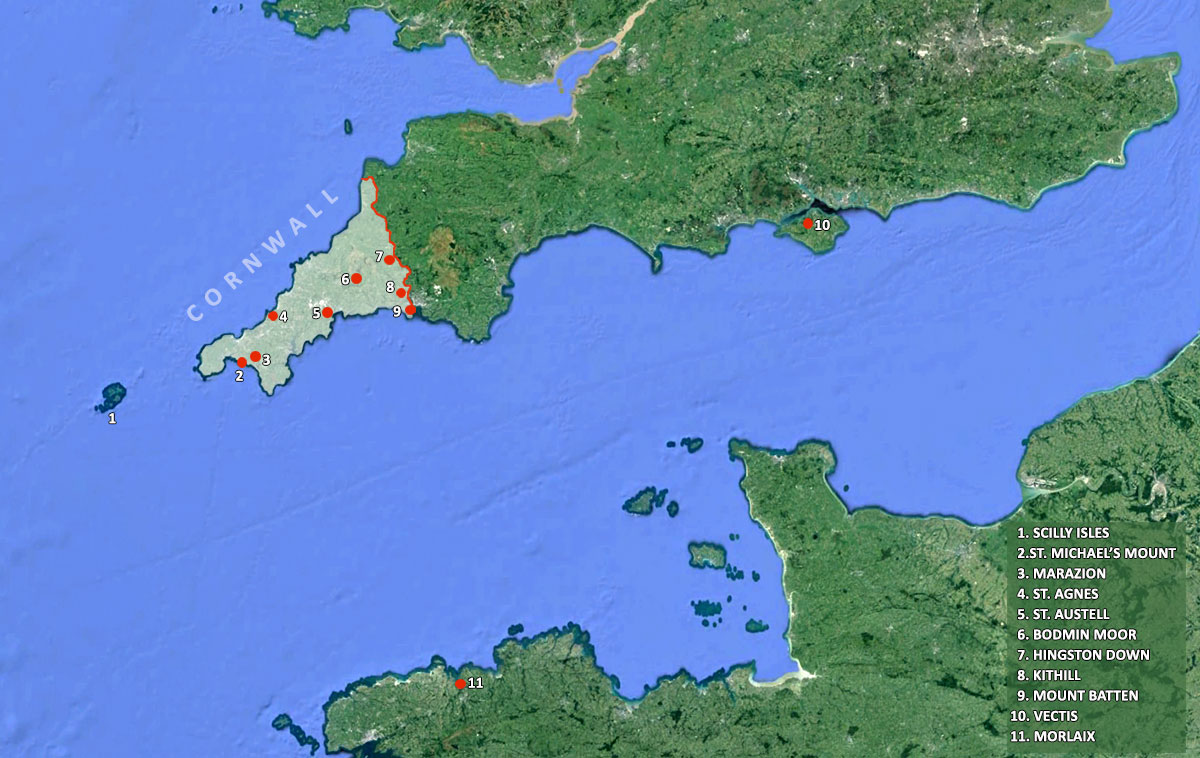
A report by Eric Taylor
Tin mining started in Cornwall around 2000 B.C. In Roman times, the richest areas for finding tin were in, using present day terminology, the Cambourne-Redruth area, the Lands End peninsula, around St. Agnus and St. Austell, the southern side of Bodmin Moor, and from Kit Hill to Hingston Down. The method used to mine the tin was known as streaming - extraction was carried out by smelting which was a seasonal activity, taking place during quiet periods in the farming year.
Production of reasonably pure tin ingots was carried out on a more or less casual basis, but marketing of the metal needed to be much more organised. Designated sites were used for the marketing which took place at fixed times in the calendar.
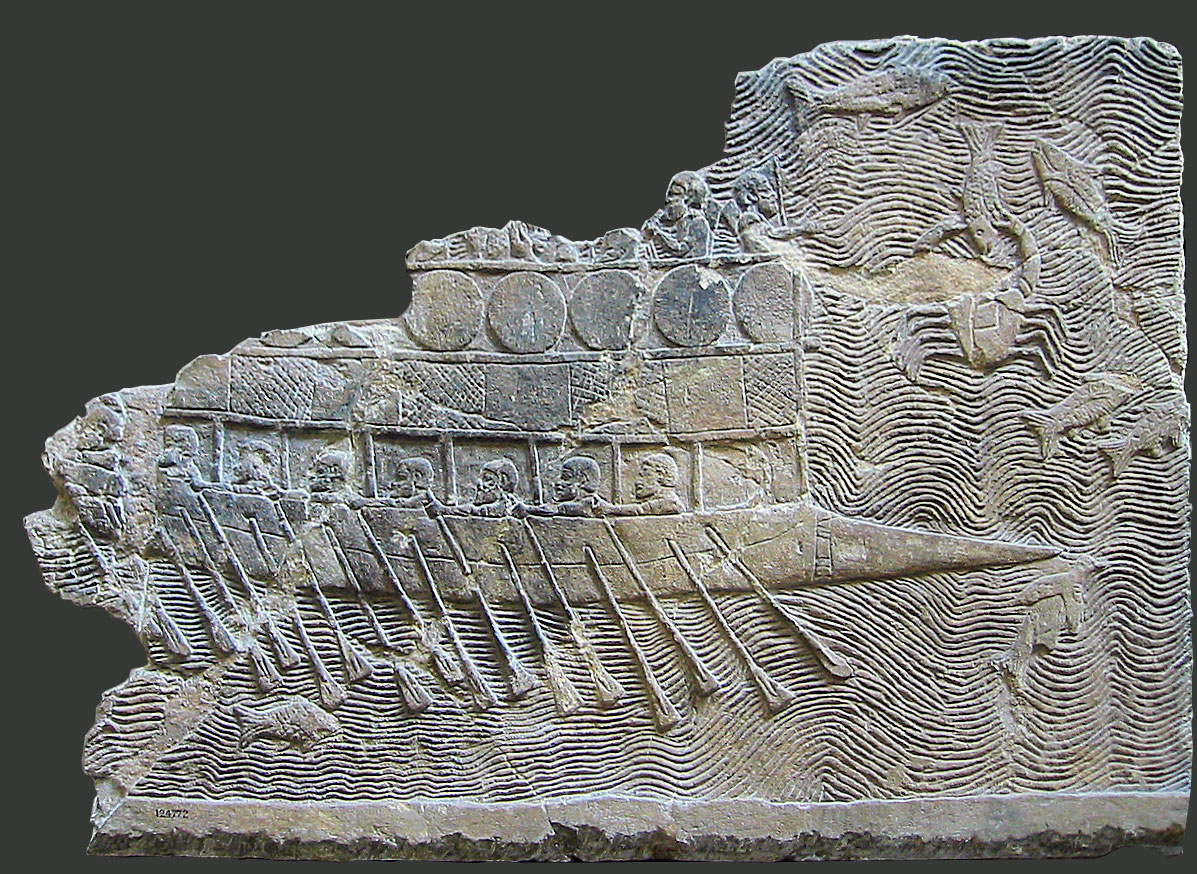
It has been suggested that the Phoenicians organised the early exportation of tin from Cornwall, but this is not universally accepted. Although it is uncertain as to whether or not there was a connection between St Michael’s Mount and the Phoenicians, in 1969 skin divers found a stone bowl with handles in Mount Bay which was confirmed to be Phoenician by the British Museum.
It is said that the Carthaginian Admiral Himilco4 developed the tin industry in north western Europe in the 6th Century B.C. When the mine at Morbihan on the Gallic tip of Amorica was exhausted, Himilco was one of the first southern Europeans to establish a foothold in Cornwall, but after a few years the mines were handed back to the Celts and the Carthaginians returned to Cadiz.
It has been suggested that the demand for tin may have been one reason behind the Roman invasion of Britain.
Bronze
There are three types of bronze:
- Tin-brons. Pliny the Elder describes tin bronze, suitable for the making of statues, being made by smelting copper ore to which has been added scrap copper and tin in the proportions of one part tin to eight parts of copper. This bronze was also used for the production of mirrors that could be very highly polished, armour, jewellery such as finger rings and surgical instruments,.
- pewter consisting of 89-90% tin together with copper, and antimony or lead
- valves for insertion in water pipes were cast out of copper 73%, lead 19% and tin 8%.
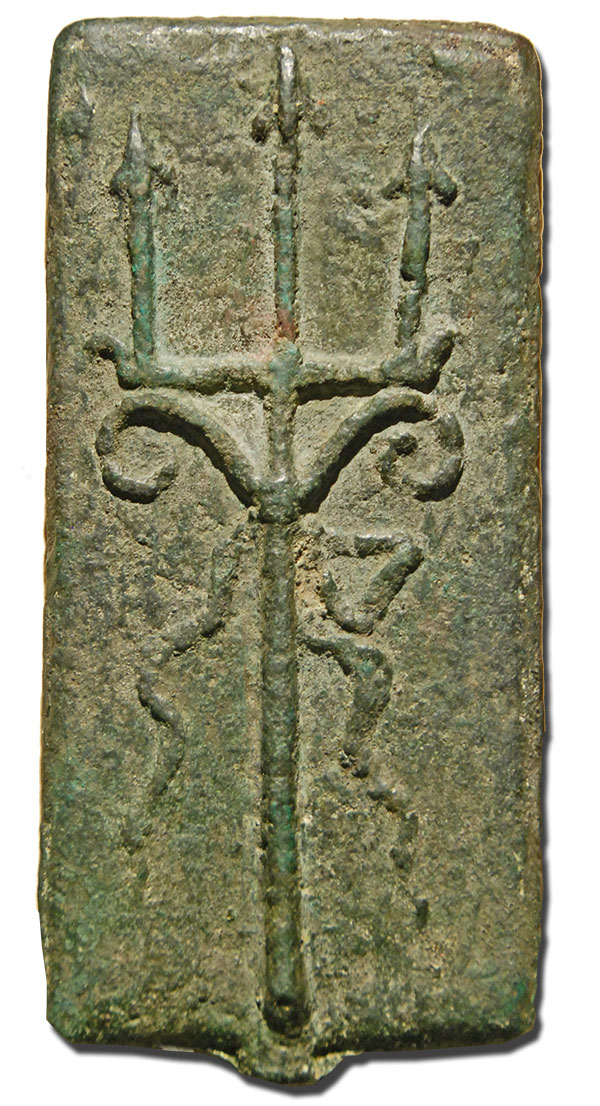
As for tin, some of the uses include:
- tin was mixed with lead to produce lead/tin solders. Pliny describes that two parts of black lead were mixed with one part of tin to produce a solder known as “tertiarum” which was used for soldering lead pipes together.
- copper vessels were coated with tin to keep them looking bright and Tyrian Purple dye, having been extracted from the Murex shellfish, was kept in tin vessels in preference to copper ones.
- tin dioxide has been found in Roman skin cream – apparently it gave the skin cream an opaque, white colour.
Between 280 and 250 B.C. the aes signatum, a very early example of Roman coinage, was manufactured from copper with a variable amount of tin added.
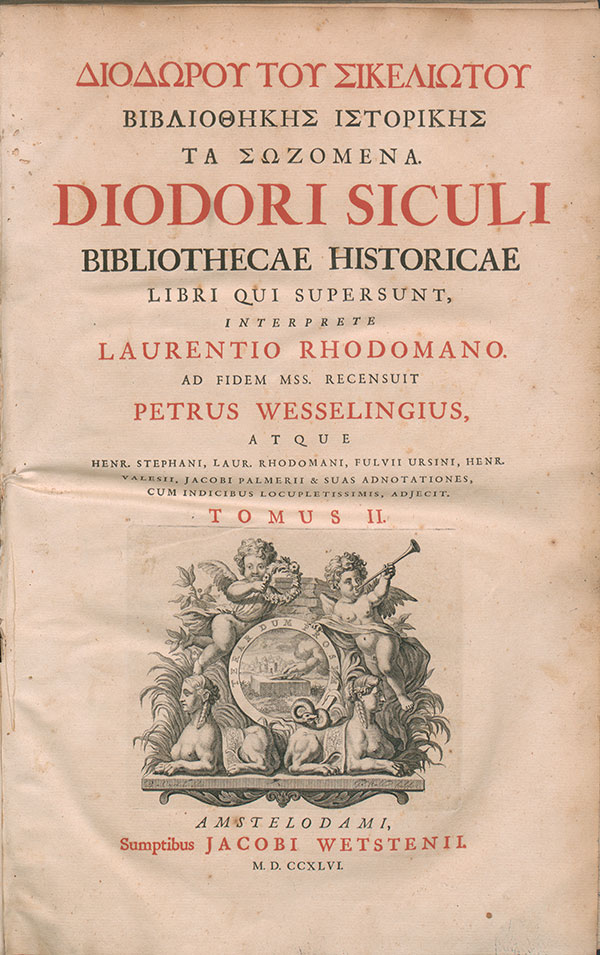
the Bibliotheca Historica.
Diodorus Siculus wrote in the first Century6: "Those Britains, who dwell near the promontory of Belerion (the ancient name for Cornwall and the Land’s End peninsula), live in a very hospitable, polite manner, which is owing to their great intercourse with foreign merchants. They prepare, with much dexterity, the tin which the country produceth. For though this metal is very precious, yet, when it is first dug up, it is mixed with earth, from which they separate it by melting an refining. When it is refined, they cast it into ingots, in the shape of cubes, or dies, and then carry it into an adjacent Island, which is called Ictis. For when it is low water, the space between that Island and the Continent of Britain becomes dry land; and they carry great quantities of tin into it, in their carts. Here the merchants buy it, and transport it to the coast of Gaul; from whence they convey it over land, on horses, in about thirty days to the mouth of the Rhone."
In de Graauw’s Ancient Ports and Harbours, the Roman port of Ictis is listed, and it is described as being located at St. Michael’s Mount, Marazion.
Origin of the name ICTIS
One suggestion is that in the Greek text of Diodorus, the name appears in the accusative case as IKTIN. From this, the nominative form of IKTIN would be IKTIS. As the letter “K” is rarely used in Latin, IKTIS becomes ICTIS.
In the ‘Bibliotheca Historica’ Diodorus describes an island that is a tin trading centre, and this island is assumed to be located off the south coast of what is now known as England. As many as twelve places on the south coast have been “identified” as Ictis, of which three are St. Michael’s Mount in Cornwall, Mount Batten in Devon, and Vectis, the Isle of Wight.
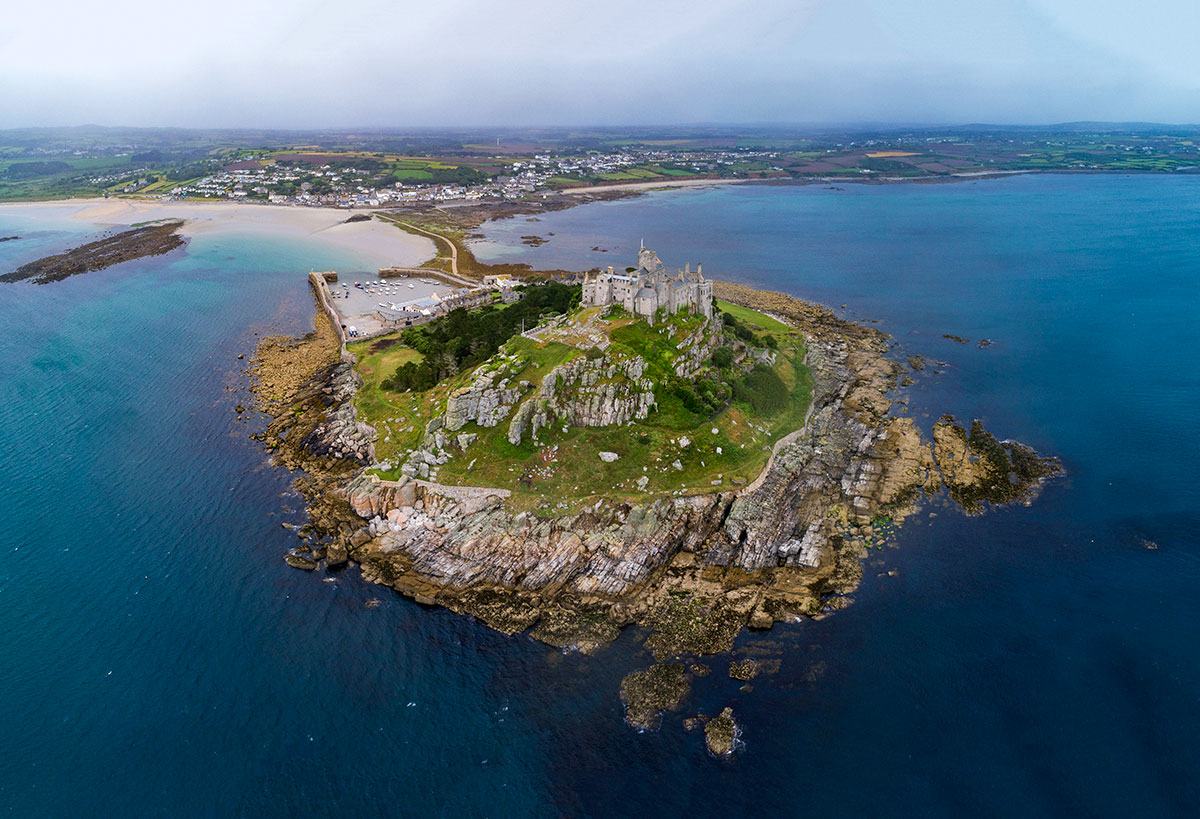
The location od ICTIS
In recent literature, Gavin de Beer takes8 the view that St. Michael’s Mount is the most likely location for Ictis, and this is supported by the Roman Britain Organisation. Barry Cunliffe favours Mount Batten on the peninsular near Plymouth9, whilst Miranda Aldhouse, writing in the “Celtic World”, suggests that the two most likely locations of Ictis are St. Michael’s Mount and Mount Batten.10.
As to the transportation of tin from Cornwall, one report suggests that smelted tin was collected at Ictis and then sent via the Bay of Biscay to the mouth of the Loire. From here, the tin was sent to Cadiz along the Loire and Rhone valleys before being shipped across the Mediterranean from Cadiz towards Rome.
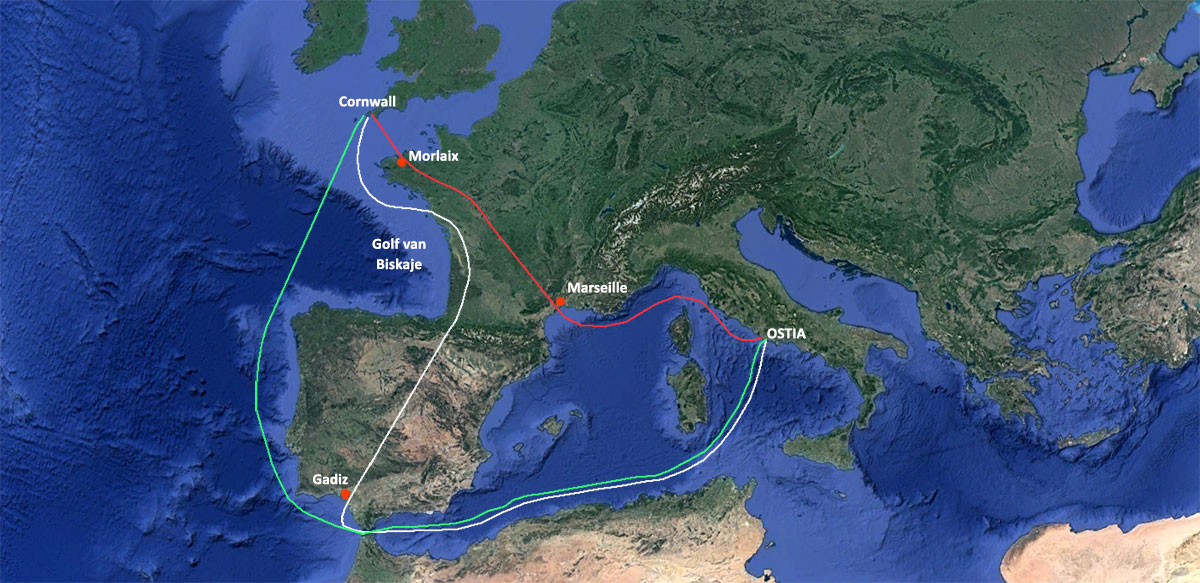
Rood= via Morlaix to Marseille and further by ship to Ostia.
Another possible route for the export of tin was to cross the channel to Morlaix. From there, the tin would have been carried by pack horse to Marseilles. A Roman shipwreck has been found in the Bay of Morlaix by divers, who found 3rd and 4th Century tin and ceramics in the wreck. (see the report at the bottom of this article).
It is accepted that transport of materials by sea was quicker than by land. However, these two land methods would be less hazardous than sailing the length of the Bay of Biscay and then around the Iberian peninsula.
Diodorus Siculus reported that: “For when it is low water the space, the space between that Island (presumably Ictis) and the continent of Britain becomes dry land”. So where does that leave us with the location of Ictis?
Vectis –The last ice age ended around 9,000 years ago, leading to a significant rise in sea levels. Vectis was eventually separated from mainland Britain about 7,000 years ago, so Vectis obviously doesn’t fit the description of Ictis referred to in the narrative of Diodorus. Vectis is at least 100 miles from the tin mines of Cornwall and the road system in southern Britain left much to be desired, even in Roman times. Why then would Cornish tin be carried so far to the east to be loaded onto ships that would then head back in a westerly direction?
Mount Batten – One reason that some favour Mount Batten as the site of Ictis is that excavations there and in the surrounding area have turned up many Roman finds. The problem here is that Mount Batten does not dry out at low tide, was never separated from the mainland by tidal flow, and once again, does not fit the description left by Diodorus.
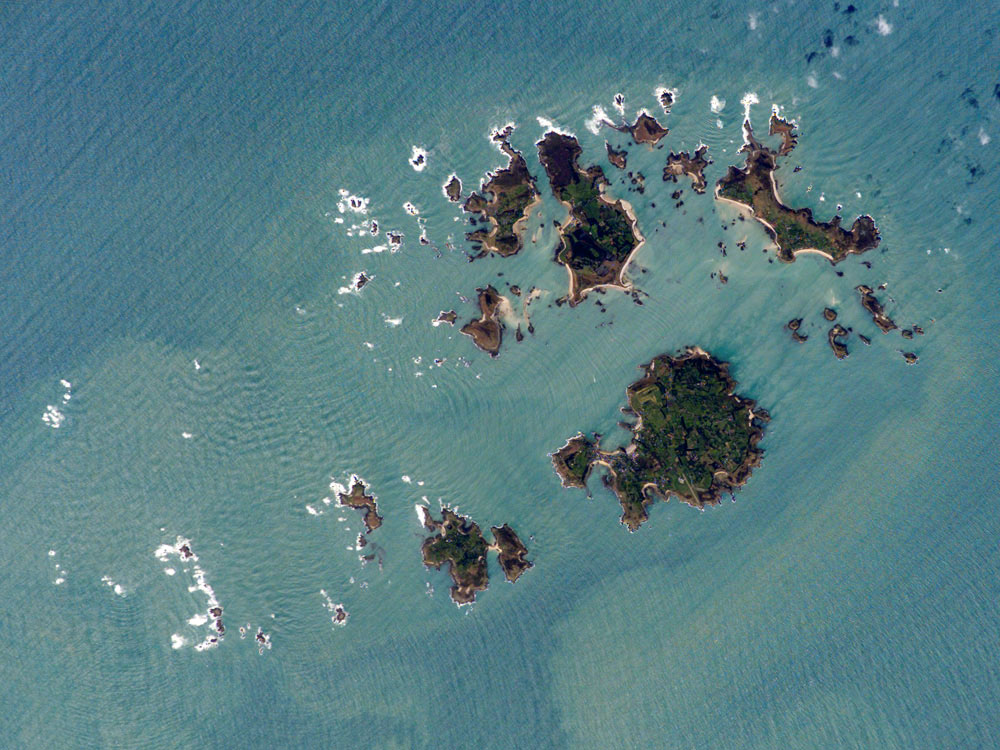
The Scilly isles – In around 1792, John Vivian of Truro11 stated: "No lode of promise had been found in the islands. If a lode had been found, it would not have been practical to extract the tin as there was no suitable water supply to extract the metal.” He went on to say: "It would be impossible to mine tin in the Scilly Isles and he assumed that the Romans would have come to the same conclusion."
However, in 445 B.C. Herodotus called Britain the Tin Islands or Cassiterides but many now think that the term Cassiterides refers to, or includes, the Scilly Isles.
Professor Charles Thomass12 described in 1985 how the islands had been separated from mainland Britain for many thousands of years, but went on to say that the water between the islands was so shallow that three of the islands were joined together at low tide. As there was so little tin on the islands, it could have been carried there from ports on the north coast of Cornwall. How then was the tin exported from the Scilly Isles?
A Roman port has quite recently been found at Caerleon13 in South Wales and it was here that troops were landed to control the Celtic Wales and Welsh borders. This would leave empty boats to return to the Mediterranean that would sail south, initially in the direction of the Scillies, possibly picking up tin there. So it would seem that Ictis could possibly be situated on the Scilly Islands and perhaps cannot be ignored altogether.
If we assume that Mount Batten and Vectis were not Ictis, that does not mean to say that they were not busy ports in their own right. No doubt Mount Batten was involved in the export of tin from Cornwall, and archaeological finds suggest that it was a busy place in Roman times.
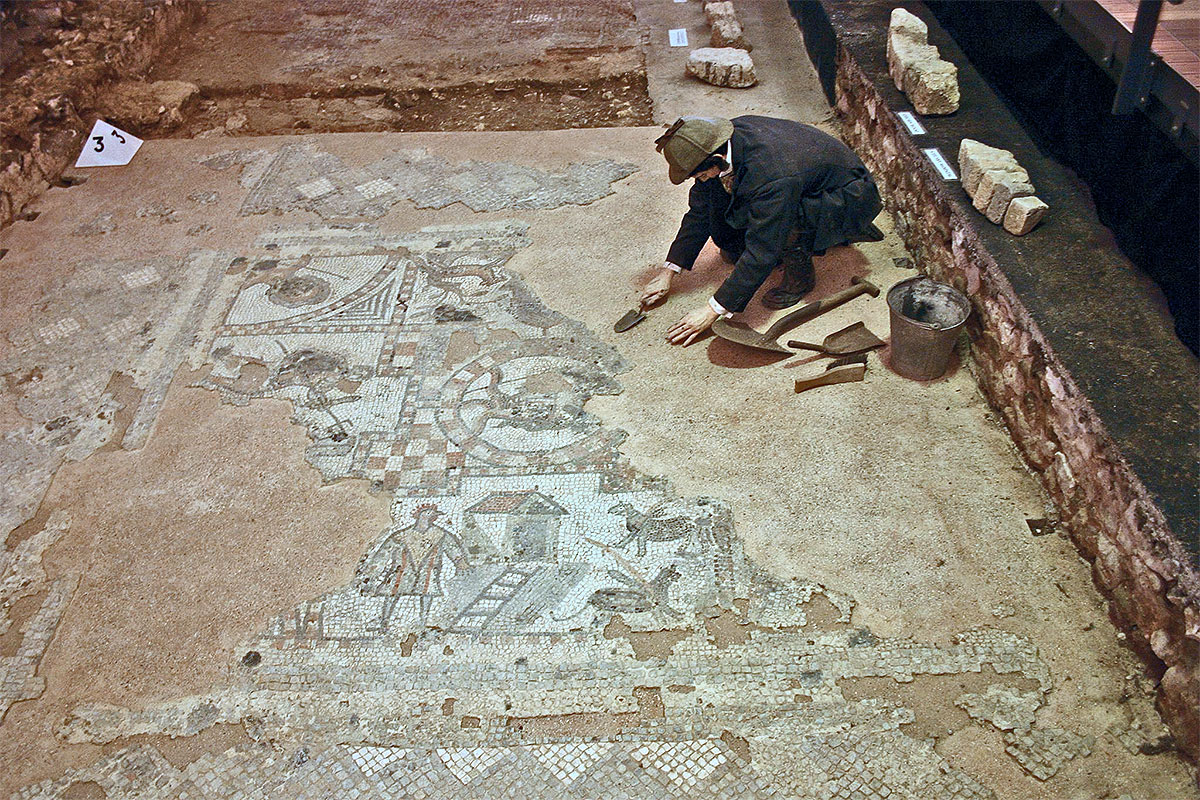
Vectis could well have been a dropping off and collecting port; perhaps Pytheas 14 stopped there or passed by on his voyage in search of amber. What is against Mount Batten and Vectis is that they don’t match the description of Diodorus.
St. Michael’s Mount does match the location described by Diodorus and the Mount would be clearly visible to sailors as they entered the Channel. Contrary to some suggestions, relevant archaeological material was discovered on the Mount by the Cornwall Archaeological Unit in their excavations of 1995-1998. Pottery from the Ictis period and six possible round house platforms were found during the digs.
One reason that was put forward to say that the Mount was not Ictis was down to the fact that Mount’s Bay was surrounded by a forest. At one point, the Mount was known as Hore-Rock in the Wood. However, it has now been shown by dating procedures of the remains of old tree trunks in the bay that the forest was submerged at least 1500 years before Pytheas sailed through the area in 325 B.C. So, according to Penhalluric in “Tin in Antiquity” 17- there are no geological or historical reasons why St. Michael’s Mount should not be accepted as the site of Ictis. The coastline of Mount’s Bay in the time of Pytheus and Diodorus Siculus was very much like it is today.
As previously stated, there is no evidence that the Mount Batten peninsula was ever cut off from the mainland at every high tide, or even occasionally, whereas the Scilly Isles just possibly may have a contribution to make.
notes:- 1:The Bibliotheca Historica is a work of universal history by Diodorus Siculus. It consisted of forty books, which were divided into three sections. The first six books are geographical in theme. In the next section (books VII–XVII), he recounts the history of the world starting with the Trojan War, down to the death of Alexander the Great. The last section (books XVII to the end) concern the historical events from the successors of Alexander down to either 60 BC or the beginning of Caesar's Gallic War in 59 BC.
- 2: Miranda Aldhouse-Green wrote in 1996 in The Celtic World: "The two places considered most likely to be Ictis are the island of St Michael's Mount, Cornwall, and the peninsula of Mount Batten in Plymouth Sound (Cunliffe 1983; Hawkes 1984) ... Mount Batten seems archaeologically more likely as there are a number of finds from there which indicate it was prominent in international trade from the fourth century BC until the first century AD (Cunliffe 1988)."
- 3:Photo 3 - Relief from Niniveh (today in the Brirish museum)
- 4: Himilco-was a Carthaginian navigator and explorer who lived during the height of Carthaginian power in the late 6th century BC. Himilco is the first known explorer from the Mediterranean Sea to reach the northwestern shores of Europe. His lost account of his adventures is quoted by Roman writers. The oldest reference to Himilco's voyage is a brief mention in Natural History (2.169a) by the Roman scholar Pliny the Elder.[2] Himilco was quoted three times by Rufus Festus Avienus, who wrote Ora Maritima, a poetical account of the geography in the 4th century AD
- 5: Aes Signatum; bronze Roman 5th century BC. (Vatican Library)
- 6: Bibliotheca Historica Boek V chapter 22
- 7:Photo 5 by Chensiyuan - Own work, CC BY-SA 4.0, https://commons.wikimedia.org/w/index.php?curid=60956425
- 8: Gavin de Beer, a British evolutionary embryologist - 'Iktin', in The Geographical Journal vol. 126 (1960)
- 9: Barry W. Cunliffe, British archaeologist - 'Ictis: Is it here?' in Oxford Journal of Archaeology, vol. 2:1 (maart 1983)
- 10: Miranda Jane Aldhouse-Green, The Celtic World (1996), 276
- 11: John Vivian van Truro(born 1750 – 7 December 1826) was a Welsh industrial in Cornish extraction
- 12: Antony Charles Thomas (26 April 1928 – 7 April 2016) was een British historian and archaeologist andProfessor of Cornish Studies at the University of Exeter, and the first director of the Institute for Corirnish studies, from 1971 till his retirement in 1991
- 13: Click here to see a video animation about the Roman fortress and port of Caerleon in Wales
- 14: Pytheas of Massalia (Ancient Greek: Πυθέας ὁ Μασσαλιώτης Pythéas ho Massaliōtēs; Latin: Pytheas Massiliensis; fl. 4th century BC), was a Greek geographer and explorer from the Greek colony of Massalia (modern-day Marseille). He made a voyage of exploration to northwestern Europe in about 325 BC, but his description of it, widely known in Antiquity, has not survived.
- 15:Photo 7 - http://earthobservatory.nasa.gov/Newsroom/NewImages/images.php3?img_id=17615
- 16:Photo 8 - Mark Hogan
- 17:Tin in Antiquity: Its Mining and Trade Throughout the Ancient World with Particular Reference to Cornwall (Maney Main Publications) – October 1, 2008
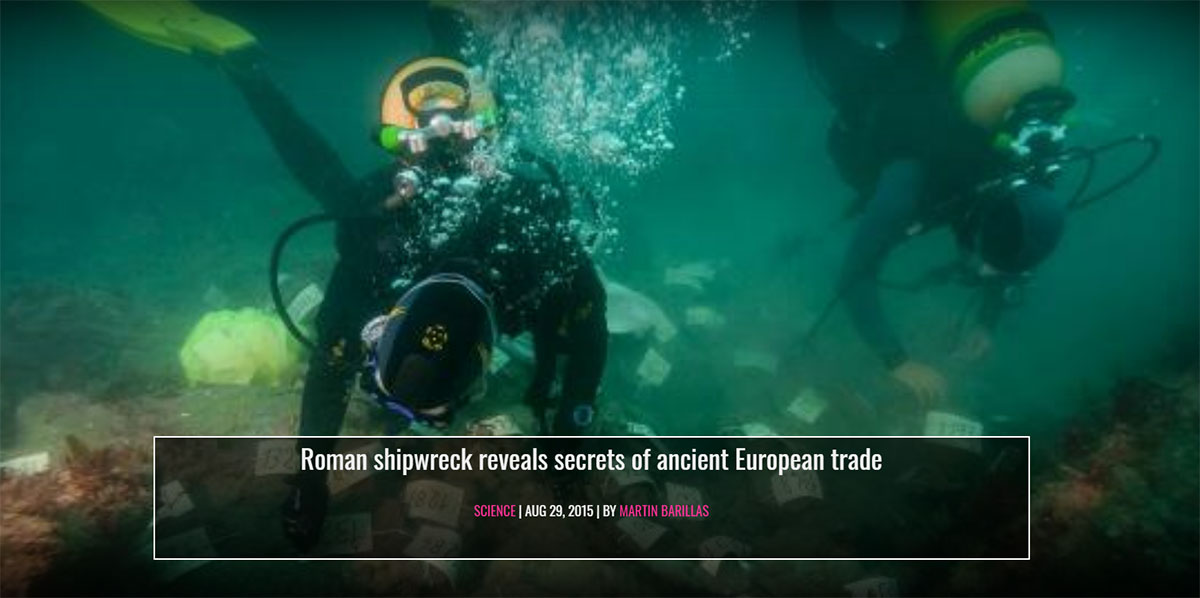






 We are committed to providing versions of our articles and interviews in several languages, but our first language is English.
We are committed to providing versions of our articles and interviews in several languages, but our first language is English.